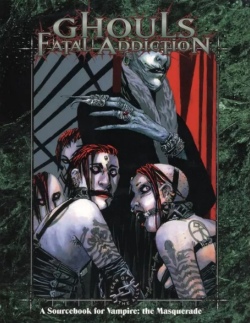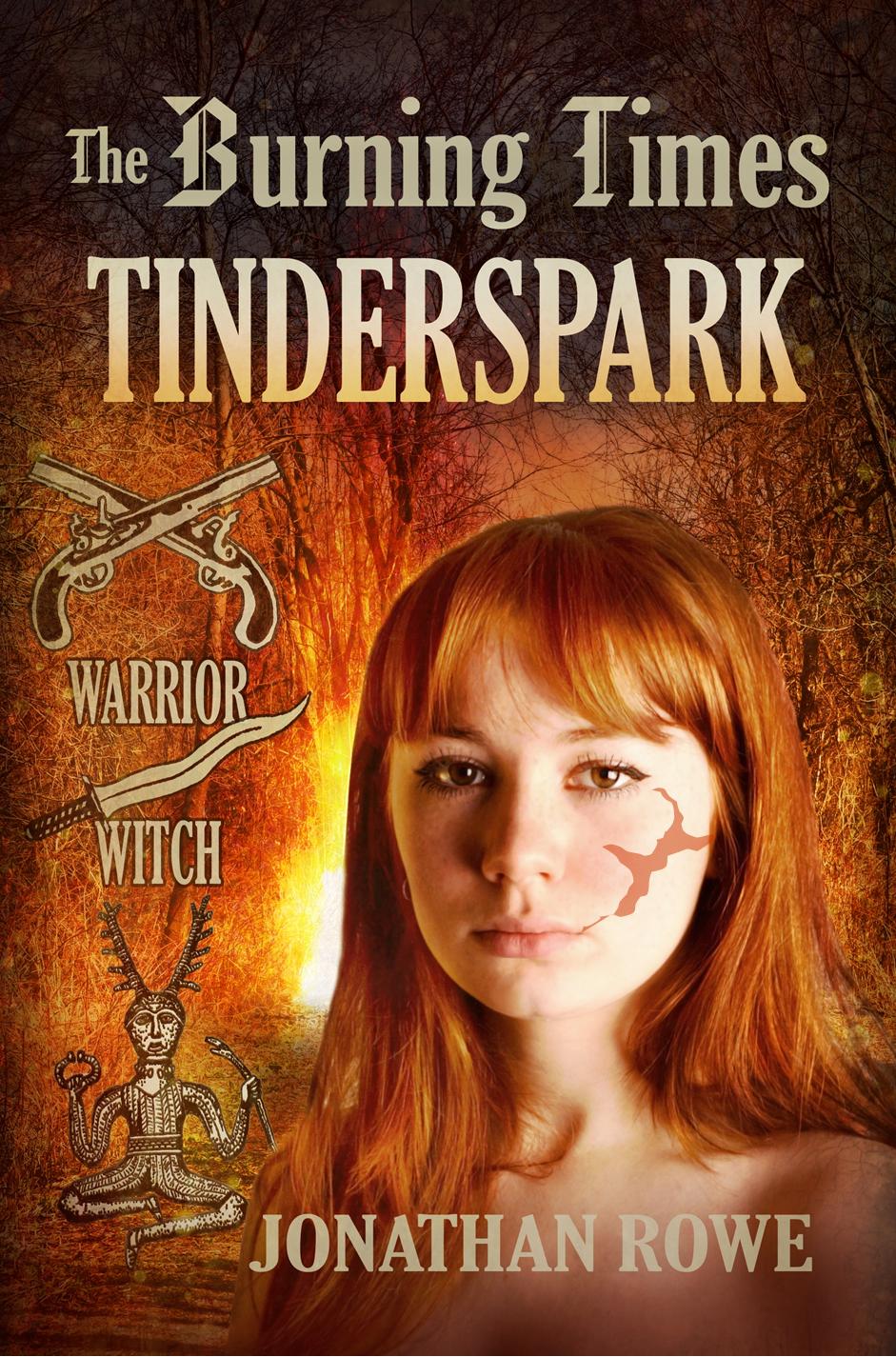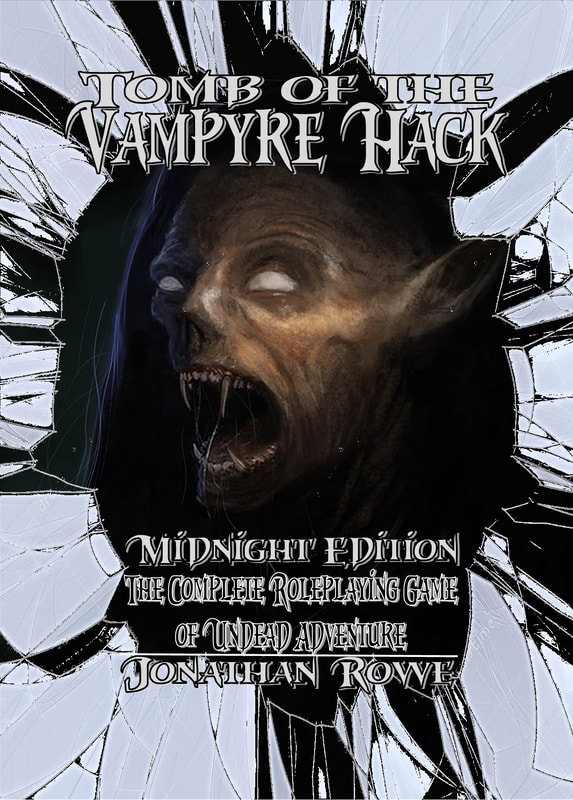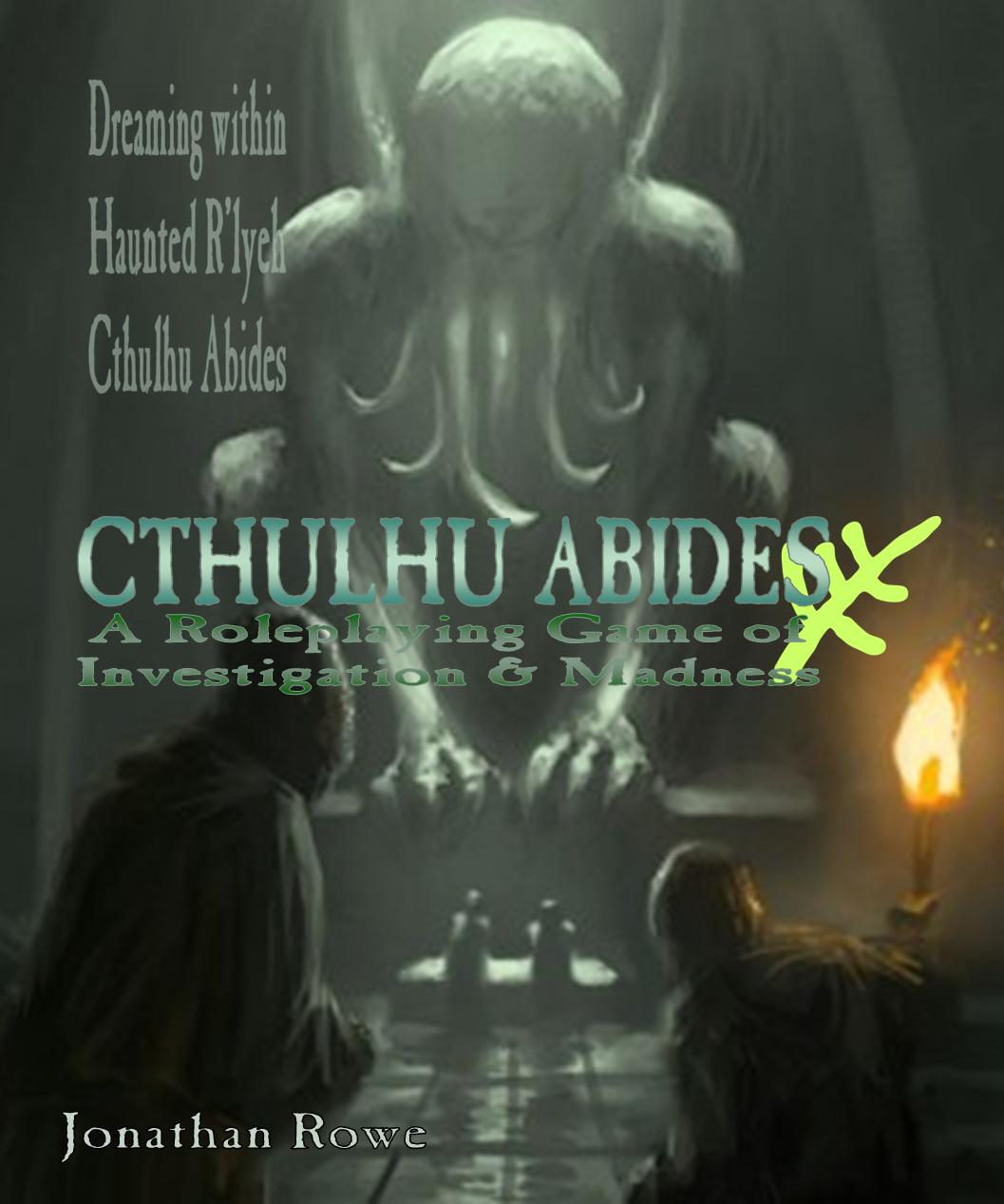|
Hot on the heels of The Vampyre Hack (see blogs passim, such as here) comes its unholy spawn, a rather dense supplement covering mortals and almost-mortals that serve, traffic with, and hunt down the undead. The dynamic cover is ‘All Hope Is Lost’ © Gary Dupuis. The book is available as PDF from drivethrurpg or physical copies from Amazon. Like most sprawling endeavours, this book started as a modest project to provide some rules for human Witch-hunters, either as more developed antagonists or as Player Characters battling against NPC vampyres. But then I added in more detailed rules on the Familiars that serve vampyres ... and then I thought I ought to cover the half-vampyric Dhampirs who are born with vampyre blood in them ... well, I got carried away. I'll take this promotional blog as a chance to indulge in a bit more critical nostalgia about Vampire: the Masquerade in the 1990s, the directions it took, and the various ways I've stuck with or departed from that template. Ghouls Just Wanna Have FunGhouls were there in 1991, in the original V:tM rules set. They are humans given a sort of provisional immortality and a bit of a strength boost by feeding on vampire blood. If the immortality and the strength isn't enough of a motivation, they're usually victims of the Blood Bond, making them devoted slaves of the vampire that feeds them. You can use the background dots in Retainers to represent these guards and flunkies, a convention which established an anonymity about them which endured right through the product line. Subsequent expansions developed the vampire Clans massively, but never really got to grips with Ghouls, who surely outnumber actual vampires by orders of magnitude and were pretty essential for their functioning and safety. Ghouls: Fatal Addiction came along in 1997 to set things straight. The book was part of the Year of the Ally series, focusing on the sidekicks in all the World of Darkness games at that time. Its cover and interior art drew heavily on BDSM themes, making it feel like a release from the company's Black Dog imprint, specialising in mature themes. It's been replaced by similar supplements for later editions, but the original is still on driverthru in all its kinky glory. Ghouls:FA leans pretty hard into the idea of Ghoul-dom as soul-crushing addiction and debasing submission. The supplement actually has a lot of neat rules for Ghoul characters of different sorts, including settling lots of questions about the nuts and bolts of feeding on vampire blood and the effects of withdrawal. The only catch is that the theme of sexual fetish running through the art and a lot of the fluff fiction rather distracts from its purpose. What was needed was a book looking at Ghouls across the vampire world and the uses different Clans find for them. Instead, there's a rather relentless focus on sexual and kinky motivations, to the point of making you wonder whether the authors are venting some personal issues. Guy Davis' art is GREAT, but if your PC's Ghoul is a snooty cordon bleu chef or a garrulous taxi driver named Frank, you might wonder what all the leather and rubber is for. Making the Revenant Relevant & ResonantWhile the poor old Ghouls were being debased, another concept was emerging from the margins of the World of Darkness. A rather controversial supplement called Dirty Secrets of the Black Hand (1994) introduced the idea of Revenants, which are humans born to Ghoul parents and granted long life and supernatural powers by the vampire blood in their veins. Yes, 'Revenants' is a bit of a stupid word for this sort of creature, since they haven't died and come back to life again. It's an odd misstep for White Wolf, who were normally so inspired in their naming conventions. But then, DSofBH is full of missteps and Revenants are among the few concepts introduced in that book to be adopted widely. DSotBH introduced three Revenant families bred by the Tzimisce vampires to serve the Black Hand: Enrathi child-snatchers, Marijava spies, and Rafastio witches. Ghouls:FA introduced a few more that serve the wider Sabbat: monster-wrangling Bratoviches, mortal-manipulating Grimaldis, scholarly Obertus, and party animal Zantosas. Other splatbooks, especially for Tzimisce, added many more - and the Tremere get their own Revenants, the wizardly Ducheski. There's no doubt that Revenants are a significant addition to the World of Darkness setting, shifting it away from 'real world with vampires in it' into a dystopia infested with half-human collaborators practising abduction, murder, and exploitation on a grand scale. Your mileage probably varies with this sort of thing. It's part of the mid-'90s 'Vampions' phase of the game where everything got lurid and nihilistic and the 1st edition's rather gentle and melancholic moral tone was binned. The designers seemed a bit ambivalent about Revenants. Perhaps aware of how their presence in a game could destabilise the power politics of the World of Darkness, they took pains to point out how most Revenant families survived only in remote parts of the world (this was the '90s: Eastern Europe or Central Asia might as well have been Oz) or worked solely for the Tzimisce, with their parochial Balkan obsessions. Vampire Hunting: what a difference a decade makesIn 1992 there was a delightful supplement for 1st edition V:tM called The Hunters Hunted which took the idea of mortal vampire hunters and turned them into player character options. Covers are so revealing, don't you think? Janet Aulisio's cover art for the 1992 original is full of atmosphere, as a geeky squad of amateur hunters peer by flashlight into a cellar, clutching their tomes of lore, stakes and a mallet. What's down there? Dare they descend? Will they ever come out again? By contrast the 2013 edition shows a bunch of dudes straight up staking a vampire on the floor. Something subtle has been lost along the way ... Hunters Hunted is maligned as a flimsy document that lacks ambition. It sets out motives for vampire hunting, gives some equipment and a few templates, and describes some organisations that hunt vampires, like the governmental NSA and CDC and the occultist Arcanum. It introduced the idea of 'Numina' or minor magical gifts, including the power of True Faith hinted at in the original rulebook and paths of 'Thaumaturgy' for mortals that were later re-branded as Hedge Magic. The main thing the book offers is a ton of theme and sensibility. Predating the cosmic scope of the later World of Darkness, it describes a setting in which vampires are the main - or possibly the only - supernatural threat and Hunters go after them armed with chutzpah and solid brass balls and not much else. Contrast 1999's release, with Hunters getting their own standalone game Hunter: the Reckoning. By the end of the '90s, the night has become a crowded place and Power Creep is well under way. Vampires are by now assisted by Ghouls in gimp suits and veritable armies of Revenants, not to mention all those Level 6+ Disciplines. New-look Hunters are called 'the Imbued' and they are honest-to-goodness superheroes with magic powers. Yup, that's where the game line ended up. So, what went wrong?In a sense, nothing went wrong. Vampire: the Masquerade was incredibly successful. It went from a little indie project to a world straddling publishing phenomenon, with spin off TV shows, card games, and video games. It beefed up, put on some muscle, lost its shyness, gained some swagger. The original themes of moral struggle and redemption got sidelined, in favour of horror, epic sweep, and Nietzschean bombast. It was following the fans in all of this. People got the game they wanted, which wasn't quite the same as they game they were originally pitched. The 1st edition rules had a story serialised in the illustrations, in which a a family man turned into a vampire by a seductive lover at a 'Midnight Michelangelo' exhibit finds the resolve to confront his creator and win back his humanity. Later editions abandoned this sort of sentimentality, in favour of torture-porn dominatrices and inhuman spiritual paths. Each to their own, but the later iterations of Vampire struck me as coarser than its first expression, for all that the setting became crowded, louder, more violent, and more dazzlingly diverse. There's a metaphor there, for postmodernism, or growing up, or something. Expanding the Vampyre HackThis book took a lot of writing. The Vampyre Hack adopted the framework of Matthew Skail's excellent Blood Hack and adapted it to thinly-disguised pastiches of the 'Classic 7' vampire clans from V:tM. It pretty much wrote itself. Bride of the Vampyre Hack was a bit more innovative, playing fast and loose with the independent and Sabbat Clans introduced in later V:tM supplements. More novelties required more thought, but the templates were still there to lean on. Both are on drivethru (click images for links) and as a bundle, while there's a complete physical edition called Tomb of the Vampyre Hack on Amazon. Spawn of the Vampyre Hack goes a lot further from the source material. First off all, there's a bunch of rules for mortals. Mortals can only get to 5th Level, they have to choose between increasing their Usage Dice or getting useful Talents, they suffer Hunger and Exhaustion and more formidable Out of Action (OofA) penalties. They're flimsy. Familiars Let's start with Familiars (aka Ghouls). In V:tM, any vampire can turn a human into a Ghoul. In Vampyre Hack, you need a Greater Blood Gift to do this or a Rank 2 Goetic Spell. Starting characters could recruit a single Familiar via a Lesser Blood Gift - and the lordly Sangrali can create Familiars for free as their class ability - but Familiars are generally rarer and a bit more precious as a commodity. They are an investment. You're also restricted to managing no more than one Familiar per level you have (twice that for Sangrali) which makes it important to choose them carefully. There will still be vampyres out there whose Familiars are sex toys, but the rules make you choose between such self-indulgence and more practical concerns. Of course, any vampyre can bind mortals to him using the Sanguine Fetter (i.e. blood bond) but Fettered mortals don't become Familiars: they still age, they don't get super powers, it's just not as useful. Out of your general pool (or Paddock) of Familiars, one is your adjutant, known as your Grimalkin. This Familiar is a cut above the rest: you've imbued her with your essence, she goes up in levels with you and acquires more powerful Blood Gifts. Grimalkins get the player character treatment. A Talent available to some Familiars is Unfettered, which weakens the Sanguine Fetter, allowing PC Grimalkins a measure of independence. It also explains the existence of Gallowglasses, who are Rogue Familiars struggling to preserve themselves by working for payment in vampyre blood. Alchemical Talents enable them to avoid the Sanguine Fetter by making blood donations last longer or even removing the enslaving effects. Familiars at 1st and 2nd Level can hold their own against a vampyre of the same level, but even with the extra powers that kick in at 3rd-5th Level, vampyres start to pull away. Unfamiliars Then there are the other Familiars that don't have it so easy. Blajini are the malformed creatures that higher level Zoltan vampyres create with their flesh-warping. They struggle to pass for human, but at least they aren't usually Fettered. Strega vampyres can't create Familiars with their blood and few of them know Goetic magic, but they summon ghosts and place them into corpses and their Zombies serve many of the same functions. Of course, the ghost has its own memories, attachments, and agenda, and the rules encourage Zombies to pursue a side hustle of dealing with the issues they died without fixing. Chorazin vampyres use Goetia to create Golems and Flesh Golems make tank-y alternatives to Familiars. Once again, the brain sourced for the Golem preserves fragmentary memories and desires from when it was alive, which PC Golems can fulfil when their masters aren't watching. Un-persons are the soulless victims of the Unlife that higher level Rakasha vampyres manipulate. It's not much fun playing one of these, but how about playing all of them? The Bhuta is the collective intelligence of the Un-persons serving a vampyre and it switches its consciousness between bodies in order to pursue its Weird - an alien agenda that the vampyre had better not find out about. Unfamiliars are an exotic option for experienced roleplayers, especially as they are hiding not just from humanity, but concealing their independence and intentions from their own vampyre masters. Dhampirs Dhampirs are what Revenants should have been called (though, to be fair, the World of Darkness applies the term to a different type of creature). Since Familiars and Unfamiliars can't beget life, something very odd has to happen for one of them to conceive a child who will be born with vampyre blood. I set about concocting reasons why this might happen. For example, the Ajakavas have their foetal soul replaced by a ghost thanks to necromancer and are born 'possessed' while the Grosvenors are descended from werewolves whose vitality overcomes the poisonous vampyre blood in their parent's body; Czernobogi are made fertile by a cthonic ritual in a sacred grotto while Harpagons have literally made a deal with a devil; the all-female Nafarroa have used their witchcraft to remain fruitful while the alchemist Darzis use potions. The Fae-touched Duvaliers, werecat Nunda, and leprous Jahangirs have similar backstories. Dhampirs are split between the Vassal Lineages who work directly for vampyres and the Mercenary Lineages who manage a degree of independence, selling their services without committing themselves. What I'm trying to do here is build the idea of Dhampirs existing independently (albeit very contingently) from vampyres. Part way between humans and the undead, they're a 'third force' in the setting, albeit a weak and disunited one. They function as powerful enforcers for the vampyric 'hegemon', but also potential allies PCs can go to that won't automatically turn the in to the Elders. They're not liminal figures like V:tM's Revenants, but they're independent and unreliable, and as likely to be the targets of vampyric plots as the instruments employed by them.. Witch-hunters Here are the Hunters that this supplement was supposed to be all about in the first place. There's a bunch of mortal character classes, like Clergy, Psychics, Shamans, Techies, and Special Agents that cover the broad templates from Hunters Hunted. The Fanatics and Paragons are a bit more like the 'Imbued' from Hunter: the Reckoning, since they are mortals whose life-changing traumas or supernatural benefactors confer powerful abilities. The Security Usage Die from Vampyre Hack is reinterpreted for hunting vampyres. You have to force the vampyre to roll Security by fulfilling investigative challenges until it shrinks and fully exhausts: then you've got him at your mercy. Yes, it'a a pretty clumsy system, but most of the time Players will roleplay their way to the showdown before the Die gets exhausted, which means a trap or ambush is in store. What has Spawn of the Vampyre Hack got goin' on?The Vampyre Hack is my part-apologetic, part-wistful, part-resentful love letter to Vampire: the Masquerade. Partly, it's a fun project to reinterpret the clunky handfuls-of-dice 'Storyteller System' into a simpler, more intuitive D&D-style game. Partly, it's a way to go back to vampire RPGs without the wider setting that V:tM acquired in the '90s, much of which I took issue with. It's a chance to approach the clans, lore, and institutions, like ghouls and revenants, afresh, saying to myself 'How would you rather this had developed?' Partly, it's an original creation, saying, 'Isn't this a novel and intriguing way of doing vampire tribes and their various undead and semi-undead apparatchiks?' TL:DR, Spawn of the Vampyre Hack concludes this project for the moment. I've got a scenario in mind and a solo rules set in development, but the old vampire itch has been scratched. If you play Vampyre Hack, with or without its Spawn, let me know how it goes! Next on the list, The Full Moon Hack, for werewolves and their ilk.
0 Comments
Leave a Reply. |
30 Minute Dungeons
Essays on Forge
FORGE Reviews
OSR REVIEWS
White Box
THROUGH THE Hedgerow
Fen Orc
I'm a teacher and a writer and I love board games and RPGs. I got into D&D back in the '70s with Eric Holmes' 'Blue Book' set and I've started writing my own OSR-inspired games - as well as fantasy and supernatural fiction.. Archives
July 2024
Categories
All
|









 RSS Feed
RSS Feed























